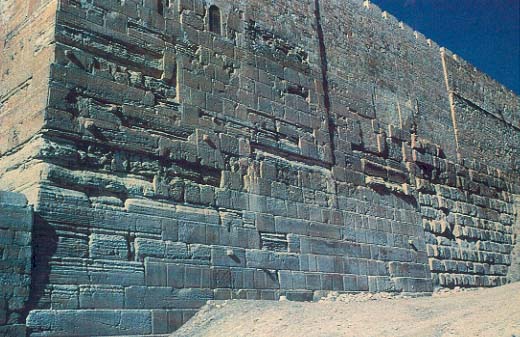Image Details

Zev Radovan
The puzzling “straight joint.” Herod extended the eastern retaining wall of the Temple Mount to the south in order to enlarge the Temple esplanade. Smoothly dressed stones with regular narrow margins, on the lower third of the wall, mark the work of Herod’s masons. This portion of wall ends abruptly at a line now called the “straight joint” (see close-up). To the right of the joint, ten rough and irregular courses, rising to a height of 38 feet, constitute the earliest retaining wall of the mount. Above those ten courses and above the smooth Herodian stones to the left, the stones are from later reconstructions.
The close-up highlights dramatic differences between the types of masonry. Herod’s stones have slightly raised, smooth centers (called “bosses”) surrounded by regular margins. The older ashlars display high, rounded, unpolished bosses and irregular shapes and margins. The older wall—to the right of the vertical seam—clearly ended here because none of its courses cross the joint. Each new course of Herodian ashlars is aligned halfway up the level of the older course.
A likely reason that the lower courses are original is that they support a massive volume of earth fill. Removing the lower walls would cause the platform to collapse, an unlikely objective even for a conquering army.
